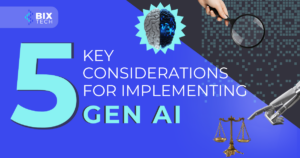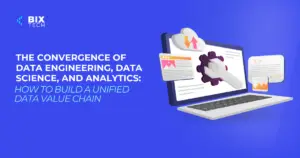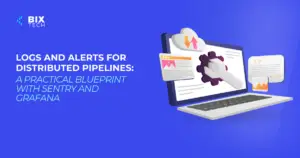Everything You Need to Know About Databricks: The Ultimate Guide for Modern Data Teams

CEO at BIX, crafting software that thinks and rethinks
In today's fast-paced digital world, businesses generate and consume more data than ever before. To transform this raw data into actionable insights, organizations rely on powerful data platforms that can process, analyze, and visualize information at scale. One platform that has rapidly become an industry standard is Databricks. But what exactly is Databricks? Why are so many organizations adopting it? And how can you leverage its capabilities for your own data projects?
In this comprehensive guide, we'll explore everything you need to know about Databricks — from its foundations in Apache Spark to real-world case studies, practical code examples, and answers to the most common questions.
Table of Contents
- What is Databricks?
- Core Features and Architecture
- How Databricks Leverages Apache Spark
- Real-World Case Studies
- Databricks in Action: Practical Spark Example
- Why Companies Choose Databricks
- Databricks and the Data Lakehouse
- Integrating Databricks with Modern Data Workflows
- FAQs: Everything You Wanted to Know About Databricks
What is Databricks?
Databricks is a unified analytics platform that simplifies big data processing and artificial intelligence (AI) workflows. Built by the creators of Apache Spark, Databricks offers a collaborative environment for data engineers, data scientists, and analysts to work together on data-driven projects.
At its core, Databricks is a cloud-based platform that manages data lakes, enables big data analytics, and empowers teams to build scalable machine learning models. It combines the best of data warehouses and data lakes in what is known as the Data Lakehouse architecture.
Key Highlights:
- Cloud-native and scalable (supports AWS, Azure, Google Cloud)
- Deep integration with Apache Spark
- Collaborative workspace (notebooks, dashboards, and more)
- Native support for data engineering, analytics, and machine learning
For a deeper dive into the impact of data science and AI in business, check out Data Science: The Business Revolution.
Core Features and Architecture
Databricks distinguishes itself with a robust set of features and a modern architecture that addresses the challenges of traditional big data platforms.
Key Features
- Unified Workspace: Interactive notebooks for Python, Scala, SQL, and R
- Scalable Compute: Auto-scaling clusters and optimized Spark runtime
- Job Scheduling: Automate ETL pipelines and machine learning workflows
- Delta Lake: Reliable, ACID-compliant data lakes for structured and unstructured data
- Collaborative Tools: Real-time collaboration for teams, version control, and more
- Security and Governance: Fine-grained access controls and compliance features
How Databricks Leverages Apache Spark
At the heart of Databricks is Apache Spark, the industry-leading engine for large-scale data processing. Databricks enhances Spark by providing:
- Optimized Spark Runtime: Faster job execution and improved reliability
- Simplified Management: No need for manual cluster setup or tuning
- Integrated Workflows: Smooth transitions between ETL, analytics, and ML
If you're new to Spark or want to brush up on the basics, you might find this Beginner’s Guide to Machine Learning useful.
Real-World Case Studies
Let’s look at how organizations are leveraging Databricks to drive innovation.
Case Study 1: Retail Analytics Transformation
A large global retailer wanted to optimize its supply chain and personalize customer experiences. By migrating their data warehouse to Databricks, they could process billions of transactions in hours instead of days. The result? Improved demand forecasting and targeted marketing campaigns, all powered by real-time analytics.
Case Study 2: Financial Services Fraud Detection
A major bank implemented Databricks to detect fraudulent transactions. Using Spark's machine learning libraries within Databricks, the bank built models capable of analyzing streaming transaction data and flagging anomalies in real time. This led to a significant decrease in fraudulent losses and improved customer trust.
Case Study 3: Healthcare Predictive Analytics
A healthcare provider adopted Databricks to analyze patient records and predict hospital readmissions. With Databricks' collaborative notebooks, teams of data scientists and clinicians worked together to build and refine predictive models — resulting in better patient outcomes and reduced operational costs.
For more real-world insights into how AI and analytics are transforming industries, see Crafting Tomorrow’s Strategies with Predictive Analytics.
Databricks in Action: Practical Spark Example
Let’s walk through a simple example of using PySpark in a Databricks notebook to analyze a dataset.
# Import SparkSession from pyspark.sql
from pyspark.sql import SparkSession
Initialize SparkSession
spark = SparkSession.builder.appName("DatabricksExample").getOrCreate()
Load sample data into a DataFrame
df = spark.read.csv("/databricks-datasets/nyctaxi/tripdata/yellow_tripdata_2020-01.csv", header=True, inferSchema=True)
Show the first 5 rows
df.show(5)
Calculate average trip distance
avg_distance = df.groupBy().avg("trip_distance").collect()[0][0]
print(f"Average trip distance: {avg_distance:.2f} miles")
Most popular pickup locations
df.groupBy("PULocationID").count().orderBy("count", ascending=False).show(10)
What’s Happening?
- We initialize a SparkSession and load NYC taxi data stored in Databricks’ sample datasets.
- We perform simple analytics: viewing data, calculating averages, and identifying popular locations.
This is just scratching the surface — Databricks supports advanced analytics, machine learning (including MLflow), and large-scale data engineering.
Why Companies Choose Databricks
Organizations of all sizes are turning to Databricks for several reasons:
- Simplicity: No need to manage clusters or complex infrastructure
- Performance: Optimized Spark runtime and Delta Lake technology drive faster analytics
- Collaboration: Shared workspaces accelerate teamwork and innovation
- Scalability: Effortlessly scale from small data projects to enterprise-wide deployments
- Cost Efficiency: Pay-as-you-go pricing, automated resource management
Check out how Databricks and similar modern data platforms are driving the Data-Driven Business Revolution.
Databricks and the Data Lakehouse
One of Databricks’ standout innovations is the Data Lakehouse architecture. Traditionally, companies had to choose between the scalability of data lakes and the structure of data warehouses. Databricks brings them together, enabling:
- ACID transactions on large data lakes
- High-performance analytics directly on raw data
- Unified governance and security for all data types
- Support for batch and real-time data processing
This approach is helping companies unlock new value from their data assets — whether for BI, AI, or operational analytics.
Integrating Databricks with Modern Data Workflows
Databricks is not a siloed tool; it’s designed to fit into your existing tech stack. You can:
- Connect to cloud storage, data warehouses, and streaming sources
- Use BI tools like Power BI or Tableau on top of Databricks SQL endpoints
- Integrate with ML frameworks (TensorFlow, PyTorch, Scikit-Learn)
- Deploy machine learning models in production using MLflow
- Automate ETL with Databricks Jobs and Workflows
Example: Using Databricks with Power BI
Power BI users can connect to Databricks SQL Analytics endpoints to visualize and share dashboards built on live, high-volume data.
FAQs: Everything You Wanted to Know About Databricks
1. Is Databricks only for big enterprises?
Not at all. Databricks is used by startups, SMBs, and Fortune 500 companies alike. Its pay-as-you-go pricing and scalable architecture make it accessible for teams of all sizes.
2. How is Databricks different from Apache Spark?
Databricks includes Apache Spark but adds a managed cloud environment, collaborative tools, Delta Lake, and performance optimizations—making Spark easier and more powerful to use.
3. Can I use Databricks for machine learning?
Absolutely! Databricks offers native support for ML workflows, including experiment tracking with MLflow, model training, hyperparameter tuning, and deployment.
4. What cloud platforms does Databricks run on?
Databricks is available on AWS, Azure, and Google Cloud, making it easy to integrate with your existing cloud infrastructure.
5. How does Databricks ensure data security and compliance?
Databricks provides robust security features, including role-based access control, data encryption, audit logs, and compliance with standards like HIPAA, GDPR, and SOC 2.
6. What is Delta Lake and why is it important?
Delta Lake is an open-source storage layer that brings ACID transactions and scalable metadata handling to big data lakes. It ensures reliability, consistency, and high performance.
7. Can Databricks be integrated with BI tools?
Yes! Tools like Power BI and Tableau can connect directly to Databricks SQL endpoints for real-time analytics and dashboards.
8. How does Databricks help with streaming data?
Databricks supports structured streaming, enabling you to process and analyze real-time data streams for applications like fraud detection and IoT analytics.
9. Is Databricks suitable for batch as well as real-time analytics?
Yes, Databricks supports both batch and streaming workloads, making it a versatile platform for diverse analytics needs.
10. Where can I learn more about data engineering and BI best practices?
Check out The Role of Data Engineering in Modern Business and Mastering Business Intelligence: A Beginner’s Guide for actionable insights.
Conclusion
Databricks is revolutionizing the way organizations handle big data, analytics, and machine learning. Whether you’re a data engineer, scientist, or business user, Databricks provides the tools you need to turn raw data into real business value — faster and more efficiently than ever before.
Ready to take your data projects to the next level? Explore more about data engineering, analytics, and how to become a truly data-driven organization in our Mastering Business Intelligence: Beginner’s Guide.
Have more questions about Databricks or want personalized guidance for your project? Let us know in the comments!









